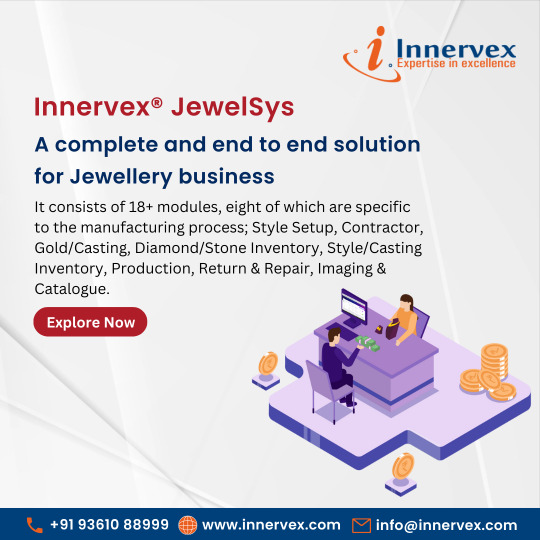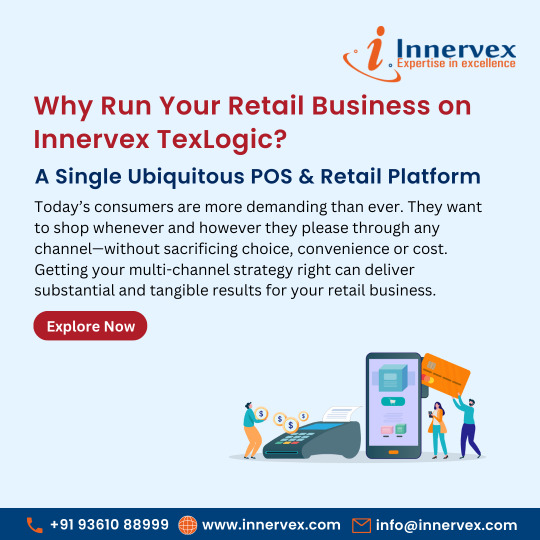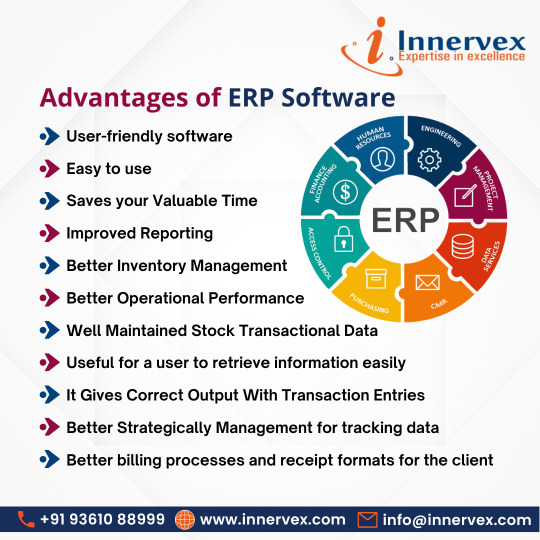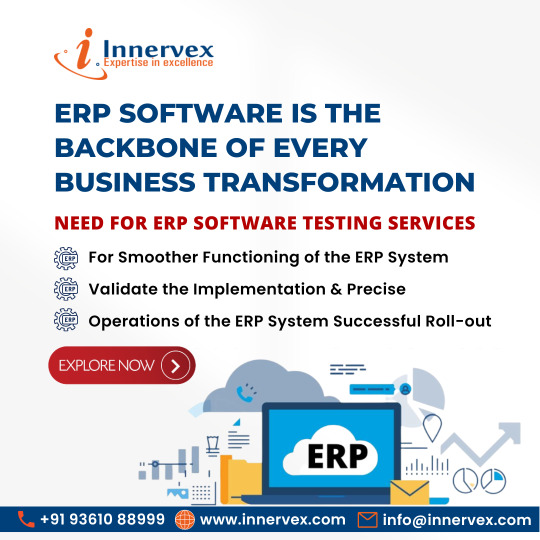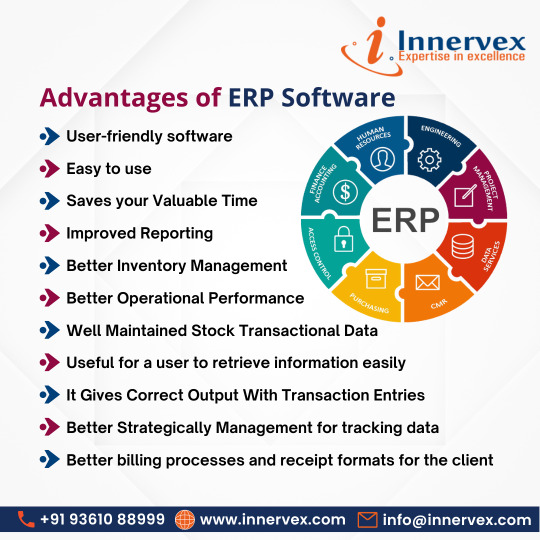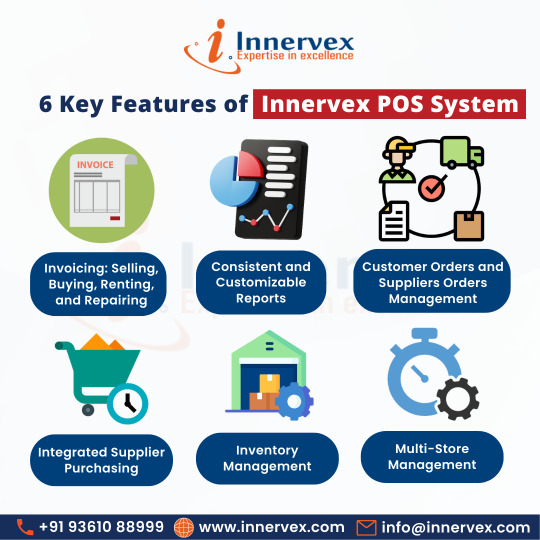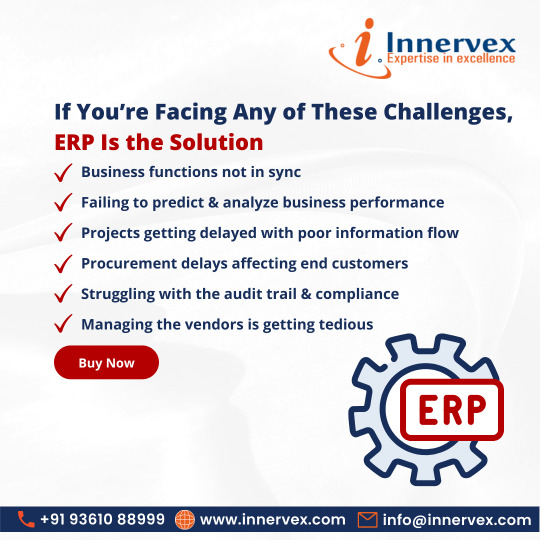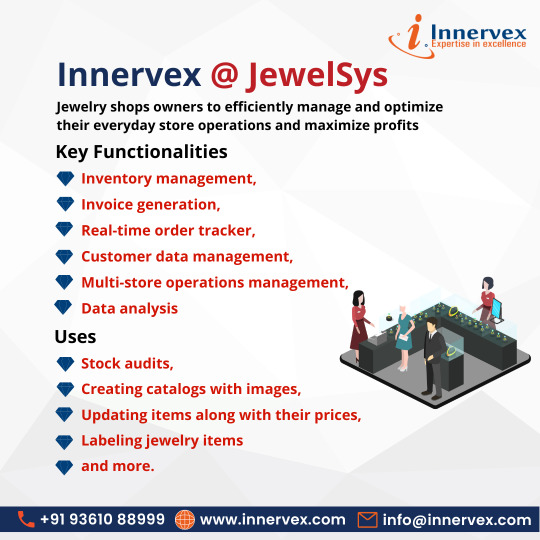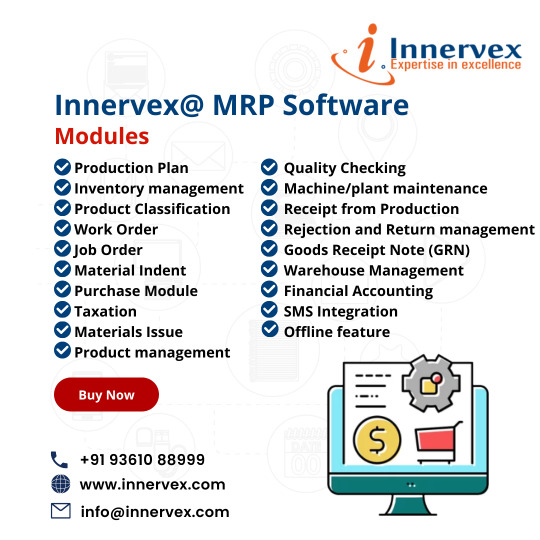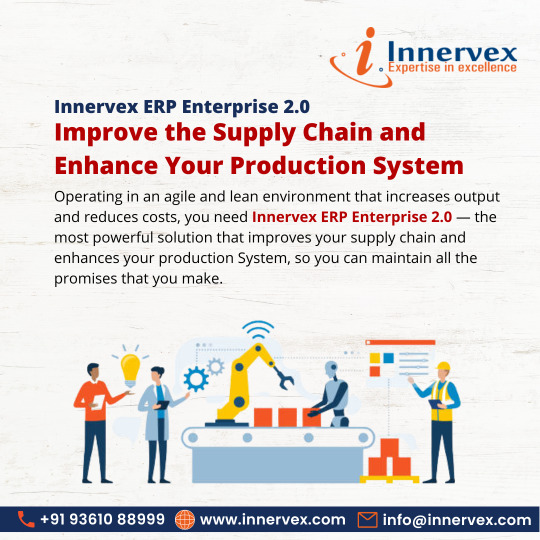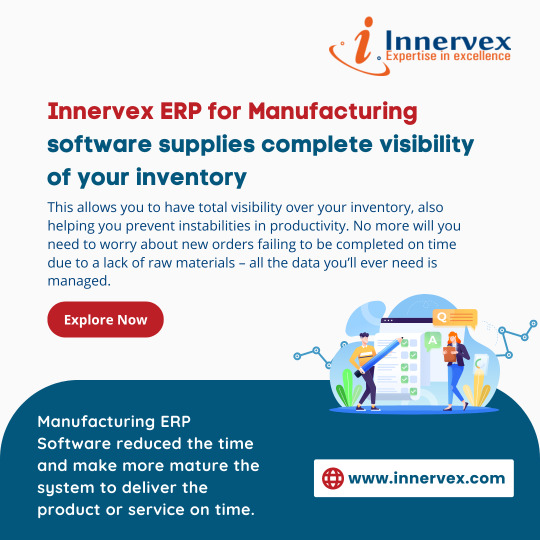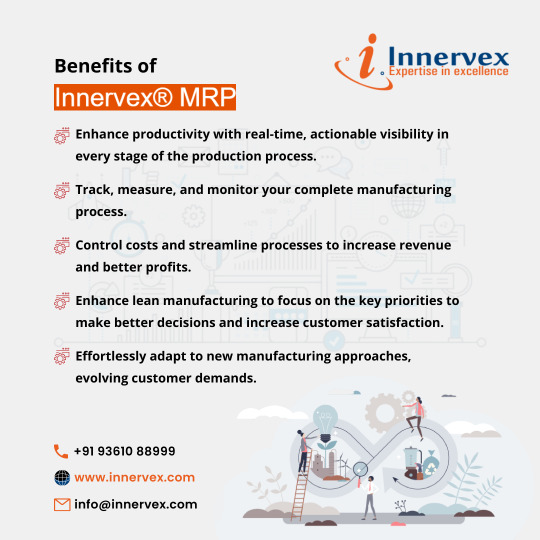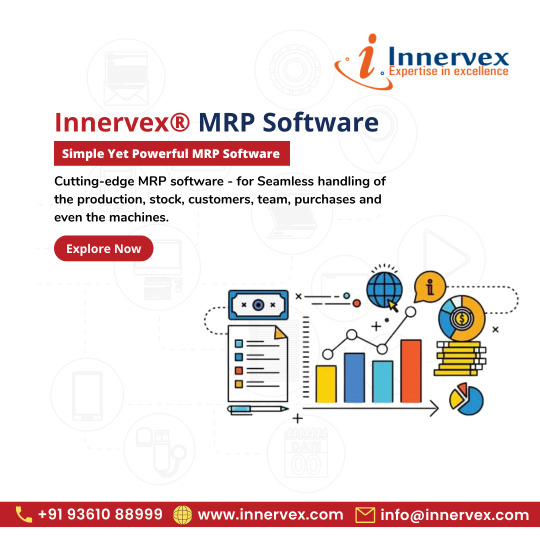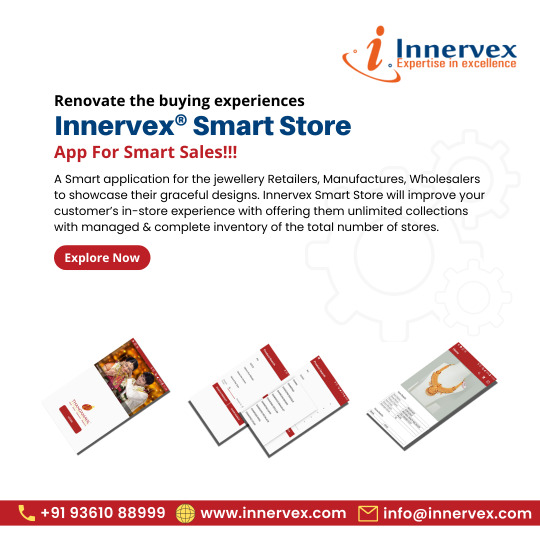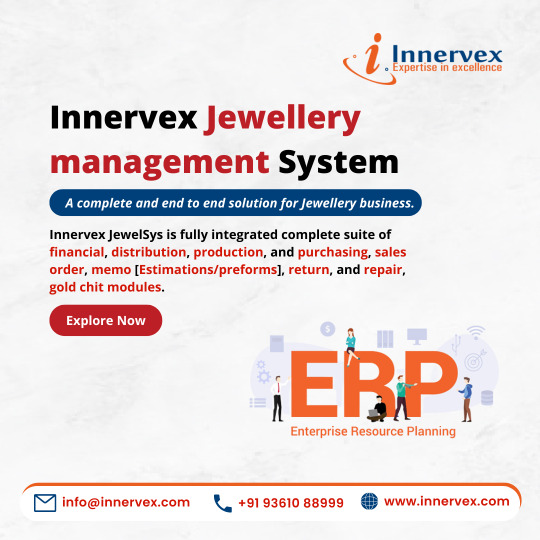Innervex Technologies Private Limited was established as S-AppSys in 2006 and incorporated as Private Limited Company, ISO 9001:2008 Certified in 2011. we are a business management software company. We create, deliver, and support adaptable, expertise software solutions with core competencies in ERP, CRM, HRMS, Retail POS, SCM and other niche business solutions. . We have been serving over 15 years to 650+ customers in 19+ industries verticals. To Know More
Don't wanna be here? Send us removal request.
Text
Innervex Jewellery management System
Innervex Jewellery management System
A complete and end to end solution for Jewellery business.
Innervex JewelSys enables you to manage your Jewellery business with greater cost control, and offers the most comprehensive set of processes to run your Jewellery business, end-to-end, no matter where you would like to begin and easy to use Desktop and web-based ERP software. It offers a comprehensive solution in Retail, wholesale, accounting and manufacturing process needs of jewellers.
Innervex JewelSys consists of 18+ modules, eight of which are specific to the manufacturing process; Style Setup, Contractor, Gold/Casting, Diamond/Stone Inventory, Style/Casting Inventory, Production, Return & Repair, Imaging & Catalogue. The rest are specific to the accounting practices; General Ledger, Accounts Payable, Account Receivable, Cash Manager, Sales Order and Invoicing, Purchase Order and Invoicing, etc., and Innervex JewelSys is generic and can be set up to suit specific business needs rather than forcing a change of existing business practice.Modules
Accounts Receivable
Accounts Payable
Contractor / Vendor Management
Return and Repairs
Cash Manager
General Ledger
Sales Orders and Invoicing
Purchase Orders and Invoicing including GRN & MRN
Diamond and Colour Stone Inventory
Style and Casting Inventory
Production
Imaging and Catalogue
B2B - Whole Sale
Gold Chit Management
Branch Transfers
Branch Management
etc.,
Complete Functionality
Innervex JewelSys is fully integrated complete suite of financial, distribution, production, and purchasing, sales order, memo [Estimations/preforms], return, and repair, gold chit modules. All modules work together to streamline business processes, maximize efficiency and ensure accurate and complete decision driving information.Scalability
Innervex JewelSys is Scalable from single user to hundreds of users as well as hundreds of branches. Our multi-location module can handle hundreds of remote branches via Web from a central location. Can be monitored from anywhere in the world.Estimates and proformas / Quotation Handling
Innervex JewelSys Can generates different types of memos like Estimates and proformas / Quotation, which can be easily converted into Invoice. Memo tracking, memo aging, memo status report to give full control on Memo system.Order Handling
Innervex JewelSys can handles different type of order such as for Memo, for Invoice, Sample, and Salesman. It is integrated with the Production system and purchase modules. Orders can be sent to Production unit or to outsourced contractors [in partial or complete] or to vendor. It can be easily converted into Memo [estimates/proformas] or Invoice.Production
Production module is integrated with daily production planning, driven by actual need [dynamic ROL and indent system], and also with sales order system. Production requests can be converted into WorkPack or overseas purchase orders, and WorkPack tracking at every stage.
Customized workbags with barcode, image and component details are printed and WIP tracking can be done by style, ship date, customer [In need], etc.Bar-coding System
Flexible bar-code system that supports unique bar-coding [ 2D and QRCODE] like month and year-based bar-coding, item price bar code and purchase batch-based bar code. Different barcodes in action are:
WorkPack is bar-coded to enable easy entry at every production stage.
Style tag with barcode.
Inventory can be handled easily with barcode.
Etc.,
Taxation
Support GST tax structure for both purchase and sales like GST, inclusive , GST Reports and other reports etc.,Warehouse Management
Warehouse management systems (WMS) control inventory and distribution, the heart of the supply chain. Innervex SCM WMS module provides deep functionality to empower partner association. Core warehouse functions like inbound receiving, putaway, picking, shipping, loading and replenishment to synchronize with other supply chain processes like order management, and vendor managed inventory, with the possible to boost your warehouse operations with extended WMS functionality, including the following features:
Complex inventory management competences with cutting-edge cross docking and deep functionality for lot/batch management, expiration data management as well as serial number capture and management
Integrates sales, inventory, and purchasing processes to get you the right merchandise at the right time to cut costs and boost sales with ROL [static and dynamic].
Multi-channel and multi-client fulfilment from single source
wave / Sales Routes & Planning, management,kitting, flow-through and capabilities with comprehensive execution control on order release and accomplishment within the distribution centre
Multi-channel and multi-client fulfilment from single source
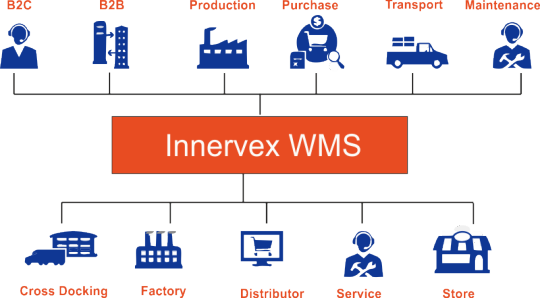
Innervex JewelSys enables the daily management of branch operation includes efficient working at counters, quick paper work handling like sales billing and other transactions and prompt fulfilment of Customer orders. Tallying cash ornament stock, beaten gold and remaining (disassembled) ornament stock at the day end in minimum time results in satisfactory business day. Control on issues like discount given, order delivery stock is important.Gold Saving Scheme [Chit] management
This module helps you to manage the chit scheme smoothly and effectively. By supporting to
The Grouping of Gold Saving Scheme members by schemes.
The Opening, collection, closing of chits
The Multi-mode Gold Saving Scheme receipts & issuing gift items
The creation and maintenance of Gold Saving Scheme pass book with Barcode
Promotions/Schemes
Innervex JewelSys enables you to define and manage all kind of promotions/schemes to boost your top line. Schemes can be done as
Primary and Secondary, Simple and Combination, On value or volume.
Applicability criteria for products, and/or for customers, On one product or on a basket.
Slab based promotions or based on sales during a period.
Promotions automatically apply in Invoicing during the validity of schemes.Targets & Incentives
Innervex JewelSys enables you to Set and manage Targets for Sales Force and Business Partners. Target can be by value or volume, Visibility of target set and achieved, by percentage and total amount and Ready to use data to calculate and distribute sales incentives and to analyse performance.Financial Accounting
End to end financial accounting module with General Ledger, Creditors Ledger, Debtors Ledger, Age Wise analysis reports, Trail Balance, Profit & Loss, Balance Sheet, Cash and Fund flow etc.,Security
System Manager provides adequate security to the user and Module level and object level access available to each user. Each window access to user can be limited to add / view / edit /delete or no access and Report access permission can be defined.Smart MIS
Extensive list of reports of all the modules to analyze the business and management information to control the day to day & a periodical operations of the retail [| POS] stores.Business Analytic and Intelligence
Innervex JewelSys Suite provides first level of intuitive dashboard that provides strategic and tactical insights to understand the top salable products, order frequency and regency, salesman performance and contribution, sales and profits assessment against target set etc., for faster and effective decision making.SMS Integration
Innervex JewelSys Suite provides an integrated SMS feature to send SMS for the Business Partners or registered customer about their transaction, offers, promotions etc and also wish them for their birthday and anniversary to maintain the Business Partners or customer relation.Cloud Ready Solution
Innervex JewelSys Suite is a Cloud ready retail solution supporting multiple locations of operations with its highly scale-able architecture. The growth of business from a single store / warehouse operation to multiple retail stores across any region is supported by our enterprise SCM suite with the reduced IT infrastructure cost. This ensures you to focus on your core business and not on technological impacts.
Innervex Cloud solution supports back office functionality with management of inventory, user rights, finance and accounting process, cash reconciliation and real time view of business operations.
Innervex Enterprise Retail Suite architect supports multiple retail stores with each store having an on premise in-store server which serves day to day transactions with mobile or terminal POS. The in-store server integrated to the central servers in the cloud, transfer the transacted data over time and consolidates into a single business view.Offline feature
In general Cloud solution does not support offline process and requires high bandwidth for communication. Innervex Enterprise SCM Suite in other case provides an offline feature that supports business operation to continue without no downtime from the in-store server, even if the internet connection fails for a period of time. Data from the in-store server will be synchronized automatically to real time once the internet connection is stablished to the cloud server infrastructure, thereby ensuring a 100% continuous business engagement.
0 notes
Video
Innervex Technologies Private Limited | ERP, CRM, HRMS, Retail POS, and ...
0 notes
Text
Top 8 benefits of MRP systems for manufacturers
Material requirement planning (MRP) is a manufacturing management system assisting manufacturers in dealing with production planning, scheduling and inventory control. MRP is also interchangeably used to refer to manufacturing resource planning, which is actually MRP II. Manufacturers in various industries have used the MRP system for nearly 30 years now.
Computerisation and data technology in the digital age has elevated MRP into a vital production tool offering several benefits to the manufacturer. Here are the top 8 benefits of MRP systems.
Inventory control
Inventory management is crucial to realising manufacturing efficiency. MRP systems work with data from the production schedule to determine the exact level and cost of inventory required to meet the demand. MRP systems maintain an optimum inventory level of both parts and materials, reducing the inventory carrying costs. In the process, this cuts down and optimises the inventory costs within a production period.
Purchase planning
Streamlining the production process is also heavily dependent on knowing what is available, what to buy and when to buy. Purchase planning requires a smart system to track the production steps and identify any needed purchases while counter-checking with the production schedule and expected material deliveries. Procurement managers configure MRPs to contact suppliers automatically when there is a need for a purchase.
Production planning
MRP systems detect bottlenecks in the production line caused by scarcity or a reduction of material. When this happens, the system can reroute production or recommend a reroute to the production of a different product where materials are available. MRPs can also focus efforts in a particular production stage at the expense of another stage deficient of raw materials and parts. MRPs help manufacturers plan their production lines even when there are material availability constraints.
Work scheduling
Work scheduling manages active production time, predicting the expected yield and adherence to the production schedule. MRPs paint the larger picture of the production process using the available inventory. Managers' can use this information to control hourly operations, equipment and labour tasks, and even accurately predict labour time and operational costs.
Resource management
Raw materials are the lifeblood of any manufacturing process. Having control and ready information about the raw materials' availability and expected yield also gives the manufacturer an idea of other resources to engage in the process. Efficiency here is key. Information from the MRP system tells the manufacturer what equipment is required at what time and when extra labour is needed, as well as whether to hire or buy operational assets.
Data management and documentation
Manufacturing involves the generation, analysis and presentation of a tremendous amount of data. MRP systems assist manufacturers in handling this information. MRP processes and document purchase data, inventory data, deliveries and cash flow data into receipts, invoices, lists, reports, and other easily structured presentations.
Economic purchasing
The system takes into account the quantity and cost of materials needed - including the cost of shipping, storage, and carrying - to come up with the most economically viable purchase to satisfy demand. MRP systems economically optimise purchases with high precision, saving the manufacturer the cost of unnecessary purchases.
Time-saving
MRP systems are fully automated and require little human intervention. This saves a great deal of labour time otherwise used to do inventory, purchases, and production management. The level of accuracy in these systems is far beyond any error-prone human method. It also manages and stores production data, which eliminates the need for entire departments.
Efficient manufacturing requires careful planning to ensure you have the right resources on hand throughout the entire production process. To find out more about the Innervex resource management system contact us today.
0 notes
Text
MRP Software Or ERP Software, Which is Right For You?
MRP Software Or ERP Software, Which is Right For You?
You are the operator of a small to medium size manufacturing company. Your business has some maternity and you have systems in place and working. A business analysis reveals that your firm is facing some stagnation for the immediate future, so you begin to look for ways to optimise what you have. Software immediately comes to mind, as you currently use computers in your operation, but not necessarily in a cohesive and coordinated way.
As you begin your research, and begin contacting possible vendors, you notice some recurring buzz word-abbreviations; MRP, MRP II, and others. Let's explore some of these and look at how you can determine if they are suitable for you. Lets begin with MRP, or Material Resource Planning. As the name implies, the function of this type of manufacturing software is to enable the business to have the materials on hand in a timely and efficient manner. This type of software can also be handy for a small to medium size company because the Bill of Material, the basic building block of MRP software can serve dual purpose as a shop router. Many systems include routers, but many less sophisticated companies have managed with just the basics.
A major weakness of MRP software is that it did not function well or often at all for capacity planning. This led to the dynamic duo of the MRP system shepherded by a buyer/planner. While one of the main reasons for the purchase of Manufacturing Software was to realise labour reduction, MRP's inherent weakness became a buyer/planner's job security. This does however work well with some companies, so even though MRP software is not an all encompassing solution it may just work for you.
Next is MRP II, which grew out of MRP as an answer to the question of how to use MRP software to make other business decisions. These decisions included how to not only ensure materials were available on time, but how to capture manufacturing costs, how to account for the materials, and how to manage payment of materials. MRP II software was thus not materials focused software solution, but a big picture solution that piece by piece brought in the entire organisation.
As can be expected, MRP II is also more labour and capital expensive to deploy. As with MRP software, there is still the basic core of setting up the Bill of Material, however, the bill of material and supporting systems require not only more labour hours to set up, but inputs from other disciplines as well. Accounting now gets a major piece of setting up financial systems. These are not limited to accounting, but also ties into manufacturing engineering on the floor, where accounting and manufacturing develop standard costs. These costs can then be used to drive cost improvements and it is this synergy that justifies the increased costs of setting the MRP II software in place.
0 notes
Text
Innervex® MRP - Simple Yet Powerful MRP Software
Innervex® MRP - Simple Yet Powerful MRP Software
Innervex MRP Software
Cutting-edge MRP software - for Seamless handling of the production, stock, customers, team, purchases and even the machines.
Innervex MRP is a cutting-edge solution for today's Manufacturing Industries to streamline business processes, and to stay agile for quick response to customer demands and growing markets. And Innervex MRP helps you manage your manufacturing process right from procurement to shipping finished goods.
Enhance productivity with real-time, actionable visibility in every stage of the production process
Track, measure, and monitor your complete manufacturing process.
Control costs and streamline processes to increase revenue and better profits
Enhance lean manufacturing to focus on the key priorities to make better decisions and increase customer satisfaction
Effortlessly adapt to new manufacturing approaches, evolving customer demands.
Production Plan
Accurate automatic planning and realistic production schedule. production schedule can be defined based on the resources and processes to manufacture products for work orders or rescheduled to accommodate client needs. And operations can be tracked.
Inventory management
Inventory management, stock movements, batch and serial number tracking. Set and optimise stock levels and avoid stock-outs. Have a clear history of your stock operations.
Product Classification
Manage multi-level Bill of Materials and Operations, the blueprint of your manufacturing system. BOM structure with multiple combinations of inventory parts and inventory assemblies. Alternate BOMs can be defined and can be mapped to different work orders.
Work Order
Work Orders can be created for workstations and time and material for each Work Order can be done. make-to-stock and make-to-order work orders can be managed. work orders to sales orders and sales contracts will be linked. For each work order routing templates, codes and tasks can be defined. real-time status of component or raw material availability and task progress can be tracked.
Job Order
The Job Order module is also the base of the MRP Solution. And this is used for External / outsourced production purposes. Again, this allows you to issue sub work orders or directly job orders, develop micro schedules / micro schedules for a particular work order, and track costs associated with the production process. Job Order provides you with complete control of the production process and the ability to see up-to-the-minute, work-in-process information. Work order is WBS of Work order or Production planning.
Material Indent
Material Indent Module will take care about Material Indent generation and issuance Material Indent is an in-house company/ Production Department document used in the Raw material Issue to production process to authorise the requisition of materials prior to initiating an actual issue to production. Material indents are audit documents used to track the movement of materials prior to their receipt from the store to production area Ex. Factory.
Purchase Module
This module will streamline procurement of required raw materials, finished goods, and other non-inventory materials. It started with Purchase Indent creation for Finished goods as well as for Raw materials. It systematises the practices of identifying prospective suppliers, Supplier Assessment, Supplier Quote Assessment, giving purchase order to the supplier, and billing processes. Purchase module is tightly integrated with the inventory control and production planning modules.
Taxation
Support multiple tax structure for both purchase and sales like CST, VAT, GST, inclusive , GST Reports and other reports etc.,
Materials Issue
This module enables Issue to production based on approved Indent [Material requisition], When a production order is carried out, required materials from stores are needed to be issued. Innervex MRP enables following methods of releasing materials for a production order.
Automatic issue of Materials: Automatic issue is the issue of Raw materials from inventory, based on BOM measure and quantity of item manufactured for a single-Issue Note.
Pull Note / partial issue: This type allows movement of raw materials to the manufacturing floor from Stores and stock movement will happen based on work in progress. Quantity of item to be issued by each pull note and quantity of pull note per item should be stated [optional].
Manual Issue: This method is normally used for an unscheduled manufacturing atmosphere such as job shops [outsourced job order]. This functionality deals with calculating estimated materials, additional materials and return of materials, whereas actual issue of materials is dealt by inventory module
Product management
product as inventory or non-inventory part, inventory assembly or service can be added with details such as units of measure, initial quantity, price, product licence type, reusability and update related purchase and sales accounts.Products are grouped and classified based on size, alternate units and conversion values, measurements, variety, design etc. Grouping helps to define the SKU properties to manage them better. Innervex MRP has in-built support for batched and serialised inventory that will help you in traceability.
Quality Checking
Innervex MRP QC module taking care of Quality inspections for purchased and manufactured materials, and tracking. QC Parameters can be set for all products. Quality Group parameters can be defined and assigned. QC Ranks and detail of QC description for each product can be Maintained. And the QC rejection can be maintained.
Team
Creation of multiple worker groups and assignment of multiple key skills can be done. workers can be assigned to machines and work orders based on their skill set, you can resolve resource conflicts and monitor resource cost for optimal results. workers can view the tasks on a PC or a mobile device.
Machine / plant maintenance
This module enables recording machine details of new and existing active machines, and with details such as Machine Name, Machine ID, Machine Type, Machine etc., Assignment of active machines to asset groups can be done, and maintenance of complete machine information such as operating capacity, process, date of installation and more. Machine breakdown history reports and performance reports can be viewed to know the ROI. And due dates for machine maintenance will be maintained for Preventive Maintenance of the Machines.
Receipt from Production
This module allows recording the details of receiving Items produced and returned materials by the production unit against a work order or job order.
Items received from Production
Details of by-products produced from the Items
Excess stocks returned
Wastages which will be in measurable form
Lot | Batch number [ form Product Lot | Batch Policies]
Rejection and Return management
Innervex MRP facilitates to enter rejection item details which will be generated from NCR or QC module, then process them to Rejection and that rejection material will be sent to repair work or sent to damage.
Return management will facilitate the raising of purchase return against any purchases, based on the return policy this will be the result of QC done by QC Team.
Goods Receipt Note
Goods Receipt Note plays a key part in the final goods receipt from “Receipt from Production” by validating that items have been received as expected by the Quality Control Department. The Goods Receipt Note is an in-house document that was created after examining the final goods receipt [done by QC module].
Warehouse Management
Warehouse management systems (WMS) control inventory and distribution. WMS module provides deep functionality to empower partner association. Core warehouse functions like inbound receiving, putaway, picking, shipping, loading and replenishment to synchronise with other supply chain processes like order management, and vendor managed inventory, with the possible to boost your warehouse operations with extended WMS functionality, including the following features:
Complex inventory management competences with cutting-edge cross docking and deep functionality for lot/batch management, expiration data management as well as serial number capture and management
Integrates sales, inventory, and purchasing processes to get you the right merchandise at the right time to cut costs and boost sales with ROL [static and dynamic].
Multi-channel and multi-client fulfilment from single source
wave / Sales Routes & Planning, management,kitting, flow-through and capabilities with comprehensive execution control on order release and accomplishment within the distribution centre
Multi-channel and multi-client fulfilment from single source
Financial Accounting
End to end financial accounting module with General Ledger, Creditors Ledger, Debtors Ledger, Age Wise analysis reports, Trial Balance, Profit & Loss, Balance Sheet, Cash and Fund flow etc.,
SMS Integration
Innervex MRP Suite provides an integrated SMS feature to send SMS for the Business Partners or registered customer about their transaction, offers, promotions etc and also wish them for their birthday and anniversary to maintain the Business Partners or customer relation.
Offline feature
In general Cloud solutions do not support offline processes and require high bandwidth for communication. Innervex Enterprise MRP Suite in other cases provides an offline feature that supports business operation to continue without no downtime from the in-plant server, even if the internet connection fails for a period of time. Data from the in-store server will be synchronised automatically to real time once the internet connection is established to the cloud server infrastructure, thereby ensuring a 100% continuous business engagement.
0 notes
Text
0 notes
Text
Benefits of using jewelry-specific IT technology in your business
Benefits of using jewelry-specific IT technology in your business
Your best chance to move ahead of other jewelry businesses (i.e. competitors) is to find these invisible issues and control them or even better: find solutions. So how do you go about doing that?
Well, let’s break down the “obvious” invisible problems:
1. Speed and productivity issues: this is the most obvious; even though you may not know how your company measures up against others in terms of speed, you probably have a gut feeling whenever your production is slower than it should be. So again, while there are many visible ways to increase productivity, such as using CAD software, 3D printing, faster computers, and so on, what makes the biggest impact are things such as tracking and quantifying the steps of the production process, the amount of labor used, the efficiency of individual employees so that the entire process can be holistically understood and managed. That's why you need robust jewelry management software.
2. Just-in-time inventory: a visible inventory management process is straightforward: you need a specific type of small diamond, let’s say a 2mm round VS1. You open the storage box or drawer containing this type of diamond, you look inside – it’s empty. Now you have to place an order and buy more. This is a straightforward process, but also inefficient since now you have to wait for the diamonds to arrive (or anything else you may need). A better – but invisible – way of doing this is if the diamonds are ordered so that they arrive exactly at the time you need them for. The right jewelry inventory system can do this. Another advantage of just-in-time inventory is that you don’t have a pile of diamonds sitting in a drawer tying down your money – you can use that money to procure better equipment, software, or whatever makes things go better for your business. You could even use it to increase your sales by investing in online marketing for example.
3. Minimizing human errors: a well-known fact is that humans make mistakes. While mistakes can be annoying, they can also have a great impact on the profitability of a company. If you have a complex production process, the chances are great that something will go wrong somewhere, resulting in a delayed order and possibly an angry customer. If that customer is pissed off enough (as some are) they can voice their dissatisfaction on the Internet with a bad review – thus a simple thing like a CAD or casting mistake can snowball into thousands of dollars of lost revenue and a lot of bad publicity. While it is impossible to eliminate human errors, it is possible to control most of them by automating quality and delivery time controls, as well as establishing error correction routines and protocols. No, it will be impossible to do this without implementing complete jewelry management software.
4. Faster, better, data-driven decisions: numbers don’t lie; that’s another fact. You may think that since you run a small business you have a complete overview of everything and making the right decisions, always. While this can be true in some cases, it is much more likely that you are making mistakes, you just don’t know about them because you are basing those decisions on bad or insufficient data. If you have jewelry management software and you have access to the relevant data in real-time in an organized and transparent way, you can undoubtedly make much better decisions. Thus integrating all your business data in a way that makes sense for your business and existing processes can make the difference between a good decision and a decision that can haunt you for a long time.
5. Better customer service: it is imperative for your business that your clients see it in the best possible way – after all, when it comes to jewelry, your customers buy the experience too, not just the product. As such, interaction with the customer, whether pre-sale or post-sale, is also very important. For example, can you show your customers in detail how their jewelry is made? Can you provide them with an instant quote for customizing a ring? Can you tell them the exact day when their custom jewelry will be delivered? Are you providing them with real-time status updates? I know that if I am buying a 50-thousand-dollar custom ring I want to know even the name of the designer or the goldsmith doing the engraving. Can you give them this information without them asking? If yes, great – you are one step closer to customer service Nirvana; if not, I will show you how to do that in one of the later videos.
6. Boosting your online sales: online sales these days affect anyone who sells any kind of product. If you are not selling online, you are missing out on serious profits. This is especially true for jewelers, who are seeing a big portion of what used to be face-to-face sales move online. Companies like the Blue Nile and Brilliant Earth for example only sell online; others that used to be brick and mortar like Zales, Jared, Kay, etc. are increasingly selling online, followed by titans like Walmart, Amazon, etc. Even small, forward-looking shops are establishing an online presence via easy-to-use webshops like Shopify and Etsy. So if you are not involved in online sales yet, you are being left behind. Yes, online sales can be challenging, especially if you deal with custom jewelry, but with the right jewelry management software, it is entirely manageable and superbly profitable.
7. Freeing up valuable time: technology and automation of processes can be of significant help for small businesses, freeing up valuable time that is otherwise spent with non-value-adding activities. Anything that does not add value to a product or service should be automated to the largest extent possible – from creating price quotes to keeping customers updated with the status of their orders, to invoicing and shipping – anything that does not explicitly create value should be automated if it cannot be eliminated. Things like calculating prices by metal and diamond markets, timekeeping, data entry, payment processing, and other administrative activities – of which even small companies have by the dozens – can be done without much human intervention. The result is the same: more time available for getting new customers and spending valuable time with existing ones. That is what makes a business valuable and profitable. Like Marcus Aurelius, the last “good” Roman Emperor said nearly two thousand years ago: one should spend his time being more social, as men are social by nature; and anything not in accordance to its nature is, you guessed it, not natural. So let’s free up some time to focus on what matters most: the customer – I’ll show you how.
8. Increasing competitiveness: companies that recognize the value of technology and invest time and money into understanding and implementing technological improvement will always find themselves enjoying a competitive advantage over those who don’t, the ones that ignore the possibilities technology has to offer. Higher efficiency, growth, and new opportunities are all ways or businesses to thrive and remain competitive. Did you know that large companies like Apple and Google invest 24 percent of their revenues into researching and developing new technologies, while most other companies invest only 7 percent on average? And that is exactly the reason why they are leaving all other companies in the dust when it comes to growth and profitability. So whether you invest that time and money, as much as you can sensibly afford, into technological improvements, will shape the future of your business more than most other decisions you have to make. Throughout history, new technologies offered a stepping stone (or sometimes a ladder) and those using them first usually ended up winning and moving up, while others withered, died, and disappeared from memory altogether. Going back to the online example, there is a huge difference between being one of the first 100 stores selling online, or being the thousandth years later, when the market is already distributed between the first few dozen companies and saturated.
0 notes
Text
What is ERP Software?
What is ERP Software?
ERP stands for enterprise resource planning software that helps companies to grow more in the future. Enterprise resource planning software manages the company’s operations, financials, supply chain, reporting, manufacturing, commerce, and human resource activities.
Enterprise resource planning software comes into the picture when a growing industry reaches a point where a spreadsheet is no longer used. As companies expand their business, they need changes and they want their system to be updated. Enterprise resource planning software is smart software that assists to collect business information and helps the organization run smoothly and efficiently operations.
Enterprise resource planning software will also offer translucency to your business to track all aspects of production, financials, and logistics. This combined process works as a central hub of your business for end-to-end workflow and data, enabling multiple departments to access it. Enterprise resource planning software leg up several functions across the enterprise, mid-sized, or small business including industry-specific customization.
Enterprise resource planning system definition?
Enterprise resource planning systems are plentiful and work individually and don’t interact with other systems. Each system needed complex, expensive, and customized code to meet the special business requirements which help prevent the new technology adoption or process optimization.
An Enterprise resource planning system brings all these various processes on the table together in one liquid system. Enterprise resource planning systems just do not provide only data connectivity within the ERP software, however, your production tools, e-commerce, and customer engagement solutions assist you to connect all your data for improved perception which helps you optimize the entire business process.
Plus, a modern Enterprise resource planning system included a complete solution like flexible deployment options, enhanced privacy and security, sustainability, and low-code customization. However, the most tectonic is to build continuity and strength into your business and processes through wisdom that aids you to initiate at a rapid rate while preparing your business for the next tomorrow.
What is the business value of ERP solutions?
In today’s business world it is impossible to ignore the impact of ERP solutions. Entire processes and enterprise data are encaged into ERP solutions, businesses can arrange separate segments and enhance workflows, resulting in eloquent bottom-line savings. Here you go with the ERP values in business:
Improved business wisdom: ERP software development helps to generate real-time information via reports
Lower operational costs: ERP solutions help to organize entire business processes and best practices
Enriched collaboration: With the help of ERP solutions, users can share data in requisitions, contracts, and purchase orders
Enhanced efficiency: Amidst a common user experience across several business functions and well-organized business processes
Consistent infrastructure: ERP development offers the same look and feels to all business activities from front-end to back-end office
Higher user-adoption rates: Comes from a common design and user experience
Reduced risk: ERP solutions help to improve data integrity and financial controls to reduce risk
With the help of combined systems, it gives lower management & operational costs
How do ERP Modules help businesses?
ERP modules may cover core functions across your company- assist classify the barriers between the back office and front office while giving the ability to adapt solutions to set new business priorities. Check out how ERP modules help in your business:
Finance: This is a backbone feature of most ERP solutions. It helps to manage the general ledger and automate financial tasks, track businesses, track accounts payable (AP), and receivable (AR), close the books proficiently, collaborate with revenue recognition standards, generate financial reports, and mitigate financial risk, much more.
Human Resource Management: ERP systems involve HR modules that offer core capabilities like time and attendance and payroll.
Procurement and Sourcing: This feature aids businesses to procure the materials & services they need to manufacture their goods or items which they want to resell.
Sales: ERP module keeps a record of communication with customers and prospects and helps to use data-driven insights to improve sales and target with the right promotions and upsell opportunities.
Manufacturing: This module is an important key feature for the planning and execution component of the Manufacturing ERP system.
Logistic and supply chain management: Another important component of the ERP system is the tracking movement of supplies and goods through the supply chain management module.
Enterprise resource planning software fundamentals
ERP software development system is designed as a single platform, to get factual data structure which typically has a common database. It makes sure that the used information across the enterprise is standardized and based on common definitions and user experiences. These are core pillars and interconnected with business processes driven by workflows across business departments (i.e.- finance, human resources, engineering, operations, and marketing) ERP development software helps to connect systems and the users who use them. ERP system is a fantastic innovation to integrate people, processes, and technologies across an advanced enterprise.
For example, a company acknowledges building cars via procuring components and parts from multiple suppliers. Through an ERP system, you can track the requisition and purchase of goods and materials that each element across the entire process uses uniform and clean data connected to enterprise workflows, procure-to-pay, analytics, and reporting. Since data acts as the lifeblood of every advanced company, the ERP development system makes it easier to compile, analyze, organize, and distribute this information to every separate system that requires it to fulfill its best role and responsibility.
Why is ERP software important for your business?
ERP software has become one of the most widely used resources for businesses that take table stakes wisely. They could assist leaders to divide human and financial capital or build more efficient core business processes that help to save money and energy without compromising on quality or performance.
An ERP software system is an asset because when you plan and coordinate everything your employees can see the presently available inventory, stock, and detailed customer orders, after that they can compare supplier purchase orders and forecasted upcoming demand. ERP software helps to make some adjustments to head off problems, and enhance communication and collaboration as well workers can also check the status of other departments to guide their own decisions.
The ERP software system does the honors of reports and analytics that can be difference-makers for the entire business. Turning a vast pile of information into graphs and charts that clearly emphasize trends and assist model possible results through ERP capabilities executives find invaluable. Get the best ERP software from Innervex ERP.
Six key Benefits of an ERP system?
The top ERP software offers many benefits, the top six benefits are here.
Improved productivity: ERP software helps to organize and automate your core business processes to aid everyone in your company to do more with fewer resources.
Deep Insight: ERP software solutions help to remove repository information, gain a single-source truth platform, and get answers fast to solve critical questions related to business.
Accelerated reporting: ERP software assists in fast-track business and financial reporting along with easily shared results. Work on wisdom to improve performance in real time.
Low risk: ERP software solutions help to boost business visibility and control, ensure compliance with regulatory requirements, and forecast and prevent risk.
Simpler IT: By using ERP software solutions that share a complete database to simplify IT and provide an easy way to work.
Improved agility: With the help of ERP software, it gives efficient operations and real-time accessible data, you can easily and quickly identify and can react to new opportunities.
What are the types of ERP deployment?
Advanced ERP systems can be opened in several ways: in a private or public cloud, on-premise, or in several hybrid scenarios that incorporate environments. Here are some types of ERP deployment.
Cloud ERP: With the help of cloud ERP, you will get all the subscribed services delivered over the internet and hosted in the cloud. This software generally takes care of updates, regular maintenance, and security on your behalf. Cloud ERP is one of the most famous and popular deployment methods for so many reasons.
On-Premise ERP: It is considered one of the traditional models for deploying software in that you can control everything. ERP software is installed in your data center at the choice of your location.
Hybrid ERP: Hybrid cloud ERP model helps to meet the business requirements and gives a mixture to the company. Sometimes, hybrid ERP acts as a two-tier ERP because ERP applications and data will be in the cloud and few on-premises.
The future of ERP?
We are living in a digital era, and transformation is too important for every business because ERP systems are at the core and enterprises are adopting digital technologies to change every part of the business, they are changing the fundamentals of the way they operate. Below following three major trends that build on the momentum we see today:
Cloud: Cloud ERP has discovered many benefits including “anywhere” and “anytime” access, reduced cost of hardware, and technical support, providing greater security, and integration with other systems. More than half of companies are selecting cloud software (63%) instead of on-premises software (37%). Running your business on the cloud is essential.
Vertical integration: The official tug-war is over between best-of-breed solutions and integrated ERP. Looking forward, we believe that companies will demand the best world-a completely and fully integrated ERP system with vertical extensions.
User Personalization: Staff, customers, and suppliers everybody wants the matching content and functionality that meet the specific requirements and interests and make them more dynamic.
0 notes
Text
MRP Software Or ERP Software, Which is Right For You?
MRP Software Or ERP Software, Which is Right For You?
You are the operator of a small to medium size manufacturing company. Your business has some maternity and you have systems in place and working. A business analysis reveals that your firm is facing some stagnation for the immediate future, so you begin to look for ways to optimise what you have. Software immediately comes to mind, as you currently use computers in your operation, but not necessarily in a cohesive and coordinated way.
As you begin your research, and begin contacting possible vendors, you notice some recurring buzz word-abbreviations; MRP, MRP II, and others. Let's explore some of these and look at how you can determine if they are suitable for you. Lets begin with MRP, or Material Resource Planning. As the name implies, the function of this type of manufacturing software is to enable the business to have the materials on hand in a timely and efficient manner. This type of software can also be handy for a small to medium size company because the Bill of Material, the basic building block of MRP software can serve dual purpose as a shop router. Many systems include routers, but many less sophisticated companies have managed with just the basics.
A major weakness of MRP software is that it did not function well or often at all for capacity planning. This led to the dynamic duo of the MRP system shepherded by a buyer/planner. While one of the main reasons for the purchase of Manufacturing Software was to realise labour reduction, MRP's inherent weakness became a buyer/planner's job security. This does however work well with some companies, so even though MRP software is not an all encompassing solution it may just work for you.
Next is MRP II, which grew out of MRP as an answer to the question of how to use MRP software to make other business decisions. These decisions included how to not only ensure materials were available on time, but how to capture manufacturing costs, how to account for the materials, and how to manage payment of materials. MRP II software was thus not materials focused software solution, but a big picture solution that piece by piece brought in the entire organisation.
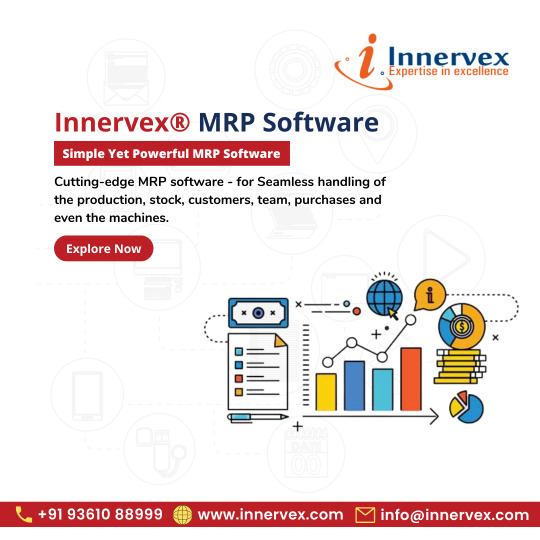
As can be expected, MRP II is also more labour and capital expensive to deploy. As with MRP software, there is still the basic core of setting up the Bill of Material, however, the bill of material and supporting systems require not only more labour hours to set up, but inputs from other disciplines as well. Accounting now gets a major piece of setting up financial systems. These are not limited to accounting, but also ties into manufacturing engineering on the floor, where accounting and manufacturing develop standard costs. These costs can then be used to drive cost improvements and it is this synergy that justifies the increased costs of setting the MRP II software in place.
0 notes
Video
youtube
Innervex® MRP Software | Simple Yet Powerful MRP Software
0 notes
Text
A Jewellery Shop Management System for Your Business
As a jewellery store owner, you recognize that it’s critical to possess the ‘right’ inventory, and also the correct amount of that ‘right’ inventory. The high-margin, low volume nature of the business requires it. But how does one know what the proper inventory is? and the way does one understand how much of it to buy?
A jewellery shop management system is the answer to both of these questions. A system that tracks sales and provides you with real-time information about quantities readily available and costs of unsold products. An entire pos system that's easy to use and helps safeguard your largest investment.
Make Informed Decisions
A good jewellery shop management system helps you create smarter decisions about your inventory. With features like item and serial number tracking, barcode scanning, and a collection of extremely useful reporting tools, you'll improve your inventory management skills. And you may make better decisions regarding which, and the way much, jewellery to stock.
Improve Customer Interactions
Another important part of your success is your relationships with customers. an honest system will include a mobile point of sale app that enables you to manoeuvre to the sales floor and spend longer along with your store visitors. Whether it’s a longtime customer who is purchasing a bracelet for her daughter, or a brand new one who is buying his girlfriend’s band at your store, a jewellery shop management system will facilitate your improvement of your interactions with them. Personalise the experience further by keeping track of their birthday or anniversary. Whether you send them a special offer or simply tell them a few new products, it’s certain that your customers will appreciate a friendly email on those special occasions.
Focus on the foremost Important Things
With a jewellery shop management system, you’ll have time to specialise in the foremost important parts of your business. Spend less time calculating prices, less time placing complicated orders, and fewer time attempting to find products at your other branches.
Work Smarter
A “What to buy for Report” makes it clear what the correct inventory is and the way much of it you may need. By gazing at the sales history of your store and some other factors, this feature will suggest the precise items that ought to be placed on your next commercial instrument. It doesn’t get much simpler than that.
A great jewellery shop management system will provide your business with simple, time-saving software that may make managing your inventory more efficient. Spend some time with what, or who, matters the foremost in your business, while ensuring your inventory is providing you with the return you’ve worked so hard for.
0 notes
